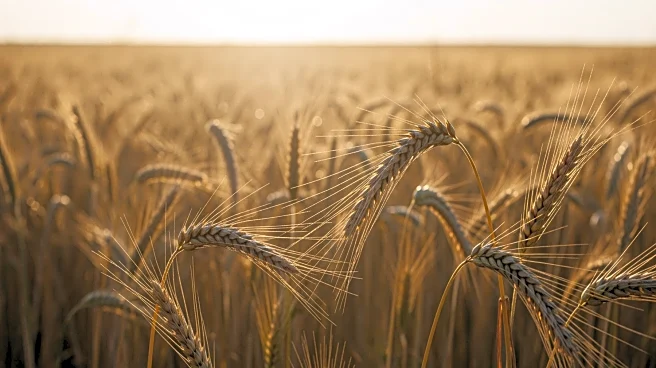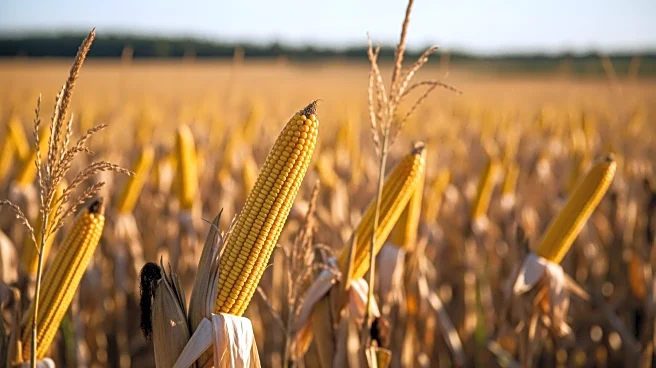What's Happening?
The USDA's World Agricultural Supply and Demand Estimates (WASDE) report released in August projected record crop yields for corn and soybeans, suggesting potential price collapses. Despite these projections, the market responded with increased buying
activity, anticipating that the largest yield numbers were already factored into prices. Corn prices have since rallied over 10%, and soybean futures have gained more than 13%, despite challenges such as harvest pressure, a government shutdown, and the absence of a trade deal with China until recently. The report's expectation of nearly 190 bushels per acre for corn and close to 54 bushels per acre for soybeans may have been overly optimistic.
Why It's Important?
The developments in the grain market could signal either a correction from a downward price trend or the onset of a bull market, which has been absent for several years. Feed prices have been relatively low, posing challenges for farmers who struggle to cover production costs. The assumption of continuous record crops and favorable weather conditions could be risky, potentially leading to production shortfalls. Such scenarios could trigger increased interest from end users and speculators, especially if farmer selling slows down. This situation underscores the importance of strategic risk management in the agricultural sector.
What's Next?
Farmers and market participants are advised to establish comprehensive feed-buying programs to manage risks associated with grain and oilseed prices. Strategies such as forward contracting, call options, or hedges through long futures should be considered. Collaboration with professionals to tailor strategies to specific operations is crucial. Effective communication and understanding of potential consequences and rewards are essential for making informed decisions rather than reacting emotionally to market dynamics.















